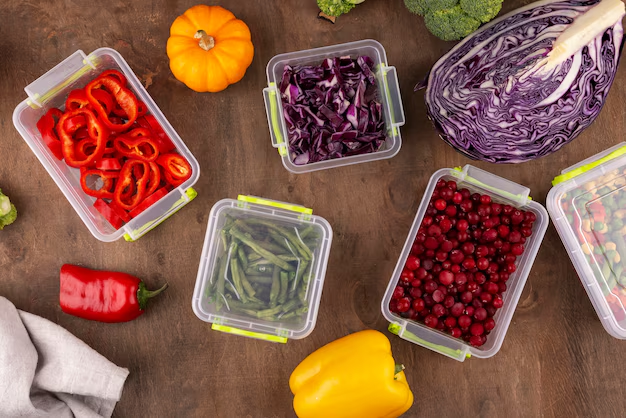Understanding Refrigerator Shelf Capacity: How Much Weight Can They Really Hold?
The humble refrigerator is the unsung hero of any kitchen, diligently preserving your groceries and leftovers, ready to serve whenever you need. While you may rely on your fridge every day without giving it a second thought, have you ever considered its capacity limits? Knowing how much weight refrigerator shelves can hold is crucial to maintaining the safety and longevity of your appliance. Let's explore this often-overlooked aspect of fridge usage and provide you with practical insights to maximize its efficiency and durability.
Why Knowing Shelf Capacity Matters
Understanding the Risk
Overloading refrigerator shelves can lead to breakage, which not only threatens the safety of your food but also incurs replacement costs and potential appliance issues. The consequences of broken shelves might include:
- Compromised Food Safety: Items could fall and become contaminated.
- Increased Repair Costs: Cracked or shattered shelves need to be replaced to ensure continued appliance functionality.
- Operational Efficiency: Overloaded fridges can struggle to circulate cool air, leading to uneven cooling and possible spoilage.
Manufacturer Guidelines and Variability
Different refrigerator models come with varying shelf capacities. It's vital to check the appliance manual for specific weight recommendations. Factors influencing the weight capacity might include the thickness and material of the shelves, where:
- Glass Shelves typically support 40-50 pounds.
- Plastic Shelves are often lighter, supporting around 30-40 pounds.
- Metal Shelves or wire racks might offer more flexibility and durability.
Key Factors Affecting Shelf Capacity
Design and Material
The materials from which fridge shelves are made significantly impact their weight capacity. Let's delve deeper into common shelf types and their implications:
Tempered Glass: Known for its strength and durability, tempered glass shelves provide an elegant and robust option. They may carry more weight than average plastic shelves and offer stability for heavier items.
Plastic Shelves: These are usually more affordable options. However, they can warp or crack under excessive load, so it's wise to reserve light to medium-weight items for these surfaces.
Wire Racks: Frequently used in fridges for their sturdiness and flexibility in loading, wire racks can be particularly adept at holding bulkier objects with even weight distribution.
Even Weight Distribution
Maintaining a balance by evenly distributing weight can prevent overburdening a particular section. Concentrated weight in one area can lead to premature shelf damage, cracking, or even complete failure. To ensure safety:
- Aim for symmetrical loading with heavier items placed closer to the support brackets.
- Use adjustable shelves to manage space as needed without forcing items to cram into tight spots.
Temperature Effects
Temperature fluctuations can also subtly affect shelf strength. Most materials contract or expand slightly with temperature changes, potentially affecting their load-bearing capability, particularly over time. Maintaining consistent internal fridge temperatures helps preserve both food and shelf stability.
Practical Tips for Shelf Optimization
Safe Loading Techniques
Here are practical steps to optimize your refrigerator space while respecting the weight capacity:
Utilize Door Space Wisely: Doors are not designed for heavy items, which can strain hinges and lead to misalignment. Store lighter, frequently accessed items like condiments here.
Maximize Bottom Shelves: Heavier items, such as bulk liquids in jars or bottles, should be placed on lower shelves to ease strain and minimize risk.
Use Bins and Organizers: Combining smaller items in bins can help in organizing contents efficiently, preventing clutter and making retrieval easier.
Regular Weight Checks
Implement a habit of periodically weighing items, especially if the contents of your fridge shift frequently due to changes in diet, seasonal foods, or event preparations. This simple practice ensures that you're not inadvertently overloading the shelves.
Exploring Related Considerations
Energy Efficiency and Shelf Loading
Proper shelf loading not only impacts the structural integrity but also the energy use of the appliance. A packed fridge might block air vents and consume more energy for consistent cooling. By respecting weight limits and maintaining optimal space utilization, you inadvertently enhance energy efficiency.
Maintenance and Cleaning
Regular cleaning is crucial for preserving shelf life and maintaining hygienic conditions. Remove items carefully and employ mild detergents to clean shelves without risk of chemical damage. Avoid abrasive materials that can scratch or weaken surfaces, particularly glass.
Replacement and Upgrades
When shelves show signs of wear and tear, it's wise to consider timely replacements. This not only prevents sudden breakage but also offers an opportunity to upgrade to sturdier materials if available for your model.
📌 Quick Reference: Refrigerator Shelf Tips
Here's a handy reference guide for quick insights and reminders:
- Tempered Glass 🥛: Holds 40-50 lbs, very stable for jars, bottles.
- Plastic 🍽️: Best for 30-40 lbs, perfect for light containers.
- Wire Racks 🧃: Good for adaptable loading, ideal for diverse items.
- Symmetrical Loading ⚖️: Ensures even weight distribution.
- Lighter Items 🚪: Store in door compartments safely.
- Heavier Items 📦: Place on lower shelves to ease strain.
- Regular Checks ✅: Frequent evaluations prevent overloading.
- Always Clean 🧼: Clean shelves gently to maintain integrity.
Final Insights
Understanding and respecting how much weight your refrigerator shelves can hold isn't just about avoiding mishaps. It's about making the most efficient and safe use of an appliance that plays a vital role in our daily lives. By considering factors such as shelf material, design, and loading techniques, you ensure the durability of your refrigerator while maximizing its potential. Remember, an optimally loaded fridge isn't just functional—it's also a testament to mindful and sustainable living.
